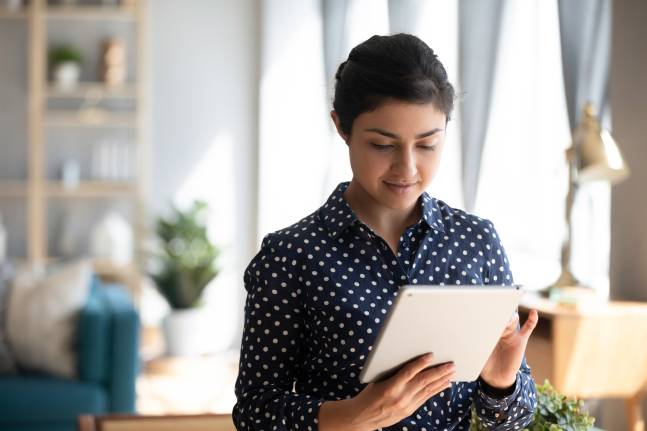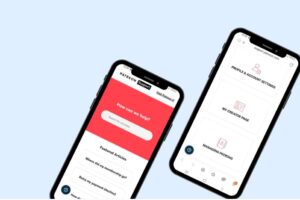On the face of it, the COVID-19 crisis caused a major disruption in people’s daily lives all over the world, resulting in them being locked up in their homes for months on end. Moreover, they could only leave to get groceries and essentials, while all of the other leisure, shopping, and entertainment destinations were shut down for a long time. In most places, the only way people could buy groceries or shop was through online shopping.
Another disruption caused by COVID-19 was in the learning sector due to the closure of thousands of schools, colleges, and universities across the nation. While it did slow down things for students, the use of technology helped them navigate through this problem, particularly with the help of online learning. Although distance learning isn’t something new, educational institutions all over the world jumped on the bandwagon to make it possible for students to continue their education.
This article covers the rise of mobile learning apps after the COVID-19 crisis and how these apps will continue to dominate the learning sector for a long time.
The Role of Mobile Learning Apps During COVID-19
The COVID-19 pandemic changed everything overnight, not just in people’s daily lives but also in their work, education, and much more. People who used to report for work at 9 AM started working while sitting on their bed in their pajamas. Moreover, people who started learning how to play new instruments with physical lessons had the opportunity to learn musical modes and music theory through an AI-powered piano learning platform like Skoove. Here is how mobile learning apps have facilitated education in the past 24 months.
A Major Shift to Online Learning Made Possible
Ever since education has been given a formal structure and categorized into different levels, we have been exposed to a traditional and physical learning model, where students would come to class and attend a lecture, which the teacher would deliver by writing something on the whiteboard, or blackboard. As time passed, the boards were replaced by projectors and slideshows, and thanks to online learning, teachers, and students don’t even have to be in the same continent to initiate an exchange of knowledge.
Virtual learning has been around for quite some time now, but it was always considered a secondary option, mainly for those students who couldn’t attend physical classes due to disability, inability to travel, or any other special reason. Rather, online learning was quite frowned upon, especially when you consider the most prestigious educational institutions that we have. Now, online learning has become the need of the hour, and institutions no longer have a choice.
The Ability to Teach Multitudes of Students
In a traditional classroom or lecture hall, you wouldn’t have more than 50 to 60 students present at any given time. However, when COVID-19 rippled through the world, it meant that people couldn’t stay within 6 feet of each other if they wanted to avoid getting infected. Therefore, it was physically impossible to fill up classrooms with students without putting them at risk for COVID-19 infection.
Luckily, mobile learning apps also help break the barrier of a limited classroom setup because it allows teachers and institutions to teach hundreds or thousands of students at the same time without having any trouble in communicating the course content.
Better Communication and Knowledge Delivery
The pandemic was a distressing time for people, one and all. Everyone was confined to their homes, and the only source of communication they had was through online classes or meetings with their colleagues and peers. Thanks to the availability of mobile learning apps, students were able to communicate with their teachers and lecturers in a more effective manner.
Moreover, students are also able to ask as many questions as they want, even after the lesson is over. Teachers are able to address each students’ questions one by one without having to take time out of the lecture. Another benefit of mobile learning apps is that students are able to repeat their lessons as many times as they want, and they can also watch the course videos at their own convenience.
Better Confidence and Self-Esteem for Students
Sometimes, students aren’t used to the high-intensity and challenging environment that classrooms have, mainly because they are intimidated by being in the presence of more accomplished and knowledgeable students. Sometimes, the fear of failure becomes too high, and it causes them to lose focus on what is being taught.
On the other hand, mobile learning apps provide students the opportunity to receive education and knowledge in a comfortable and less challenging environment, which also enables their ability to be more receptive towards the course content and learning material. As a result, they will also be able to do well in tests and exams and also score better than they usually do.
Mobile Learning Can Enhance the Classroom Experience
Although mobile learning apps are considered to be an alternative to physical learning and classrooms, they can also be used to enhance the classroom experience. You don’t have to choose one or the other, and both of them can be used in a hybrid learning model that benefits both teachers and students. Through this model, educational institutions can make it possible for students to attend courses and lessons from any part of the world, rather than having to travel to another part of the world just to sit in a classroom.
Moreover, students are able to fit their education into a busy schedule filled with work and other responsibilities. They don’t have to adhere to a fixed timetable that doesn’t suit their requirements, and they are forced to follow. Therefore, they will be much more invested in their learning and will also be able to finish their degrees and courses much quicker.
With this, we finish our guide on the rise of mobile learning apps after the COVID-19 crisis. As you can see, mobile learning opens up a new spectrum of benefits and applications that can be extended to fit different environments. Hopefully, we will be done with the pandemic really soon and be able to enjoy the benefits of technology in a better way.






![YouTube SEO in 2024 [Definitive Guide]](https://getpixie.com/wp-content/uploads/2024/02/shutterstock_1684828252-1-150x150.jpg)








